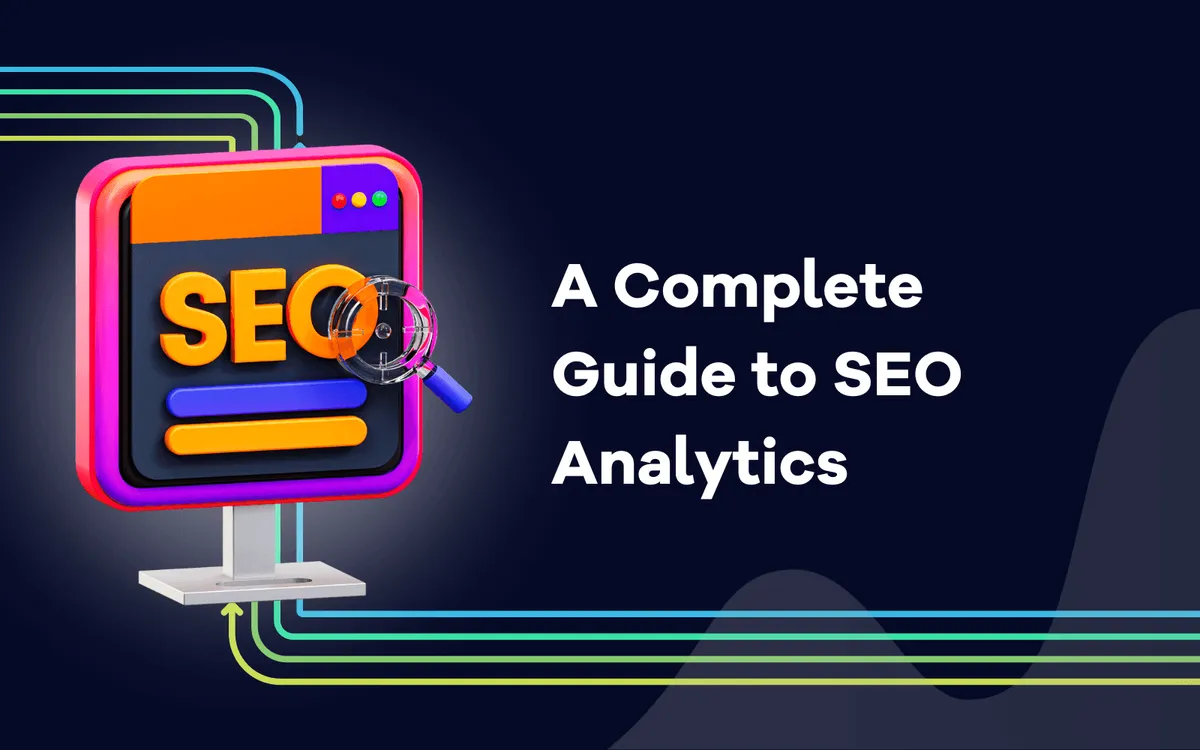
A Complete Guide to SEO Analytics

Dan Annetts
December 14, 2023
Learn the ins and outs of analyzing search engine optimization data to boost your website's performance and visibility. From keyword research to tracking metrics, this article covers it all.
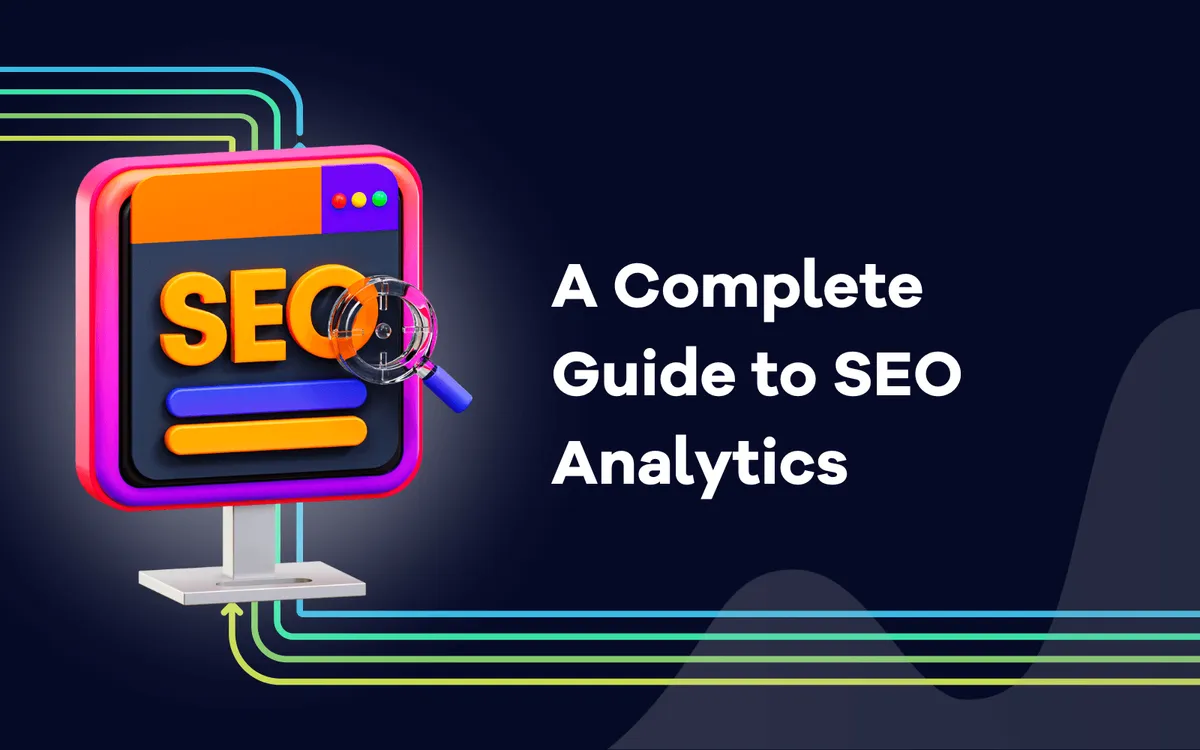
SEO analytics is an essential tool for businesses looking to improve their online presence and increase their website traffic. Understanding the fundamentals of SEO analytics can help businesses identify areas for improvement and make informed decisions about their digital marketing strategies.
This comprehensive guide simplifies the complexities of SEO analytics, highlighting its crucial role in understanding and enhancing your website performance.
What is SEO analytics?
In simple words, SEO analytics refers to collecting, analyzing, and interpreting data related to a website's performance in search engines. It involves the measurement of various metrics and KPIs that impact a website's visibility and ranking on search engines.
The primary goal of SEO analytics is to gain insights into the effectiveness of SEO efforts and to make data-driven decisions to improve a website's overall performance in organic search.
Beyond these fundamental goals, there are several other compelling reasons why businesses and website owners should prioritize SEO analytics. Let’s explore some of them in detail.
Why is SEO analytics important?
SEO analytics is crucial for several reasons, playing a fundamental role in the success of digital marketing strategies. Here are some key reasons why SEO analytics is important for your business:
Performance Measurement: As discussed above, you can use SEO analytics to measure how well your website is performing in search engine results. Metrics like organic traffic, keyword rankings, and user engagement provide a comprehensive overview of your site's success.
Understanding User Behavior: SEO analytics tools offer valuable information about user behavior on your website. This includes data on user journeys, popular content, and areas where visitors may be dropping off. Understanding user behavior helps you optimize your site for a better user experience.
Competitive Analysis: SEO analytics allows you to benchmark your performance against competitors. By analyzing competitors' strategies, keywords, and backlink profiles, you can identify opportunities to gain a competitive edge in organic listing.
Adaptation to Algorithm Changes: Search engines frequently update their algorithms, impacting how websites are ranked. SEO analytics helps you stay responsive by monitoring changes in rankings and traffic patterns, enabling quick adaptation to algorithm updates to maintain search visibility.
Identification of Technical Issues: SEO analytics tools can highlight technical issues affecting your website's performance. Whether it's slow page load times, broken links, or mobile responsiveness problems, addressing these issues enhances your website's overall health and performance in search engines.
Now that we've discussed why SEO analytics is helpful, let's move on to how you can start using it and enable your website for SEO monitoring.
Setting Up Your SEO Analytics
Setting up your SEO analytics is a crucial step in understanding the performance of any website. For the foundational setup, we will utilize tools like Google Analytics, Search Console, and third-party tools, to help you gather valuable insights for your SEO strategies.
A. Configuring Google Analytics for Maximum Insights
Starting with configuring Google Analytics, which is the process of using the platform to collect and present data in a way that offers comprehensive insights into various aspects of your website's performance. This involves setting up the necessary accounts, properties, and tracking codes to ensure accurate data collection.
Steps to follow:
Account Creation: Begin by creating a Google Analytics account using your existing Google credentials or by setting up a new Google account.
Property Setup: Once the account is established, create a property for each website you want to track. This involves providing essential details about your website, such as its name and URL.
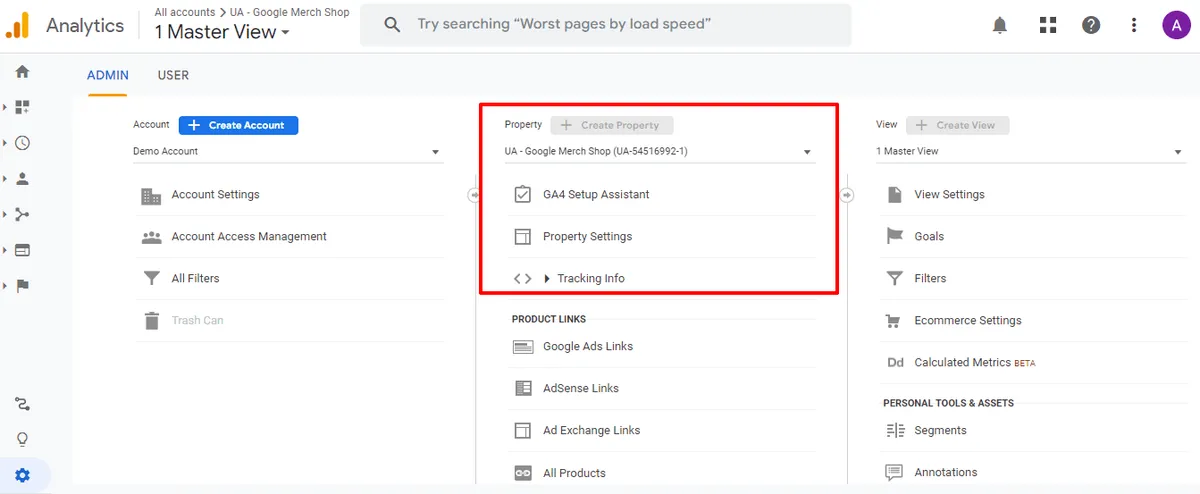
Tracking Code Installation: Obtain a unique tracking code from Google Analytics, and embed it into the HTML code of your website. This tracking code is crucial for collecting data on user interactions, traffic sources, and other relevant metrics.
Configuring Google Analytics correctly is foundational for accurate data collection. It ensures that you capture comprehensive insights into your website's performance, enabling you to understand user behavior and identify popular pages. For a more focused and detailed analysis of the metrics, you can also set up custom reports.
Here is how to do it:
- Navigate to the "Customization" tab within the Google Analytics dashboard to access the custom reporting features.
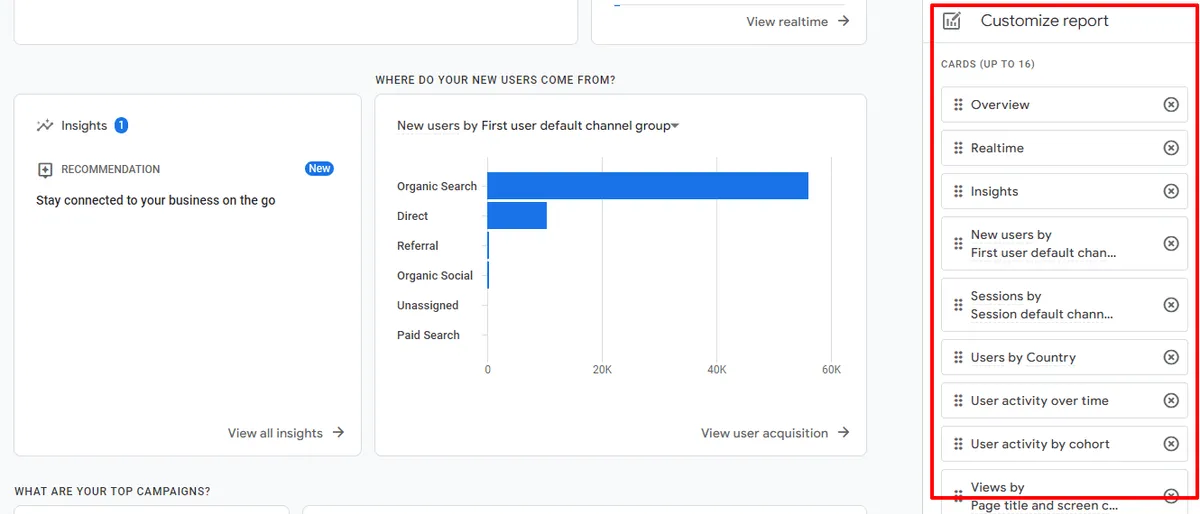
Define the specific metrics and dimensions that align with your analysis goals. This could include user behavior, conversion tracking, or performance metrics for particular pages.
Refine the data further by applying filters and segments. Filters exclude irrelevant information, while segments allow you to analyze specific subsets of data.
Save your custom reports for future use. This allows for easy access to customized insights and facilitates collaboration by sharing these reports with team members.
B. Connecting Google Search Console to Your Website
Integrating Google Search Console allows you to monitor various aspects of your site's performance in search engine results. This integration provides valuable insights into how Google perceives your website.
Steps for integrating your site with Seach Console:
- Verification: Begin by verifying ownership of your website through one of the methods provided by Google Search Console. This step ensures that you have control over the website.
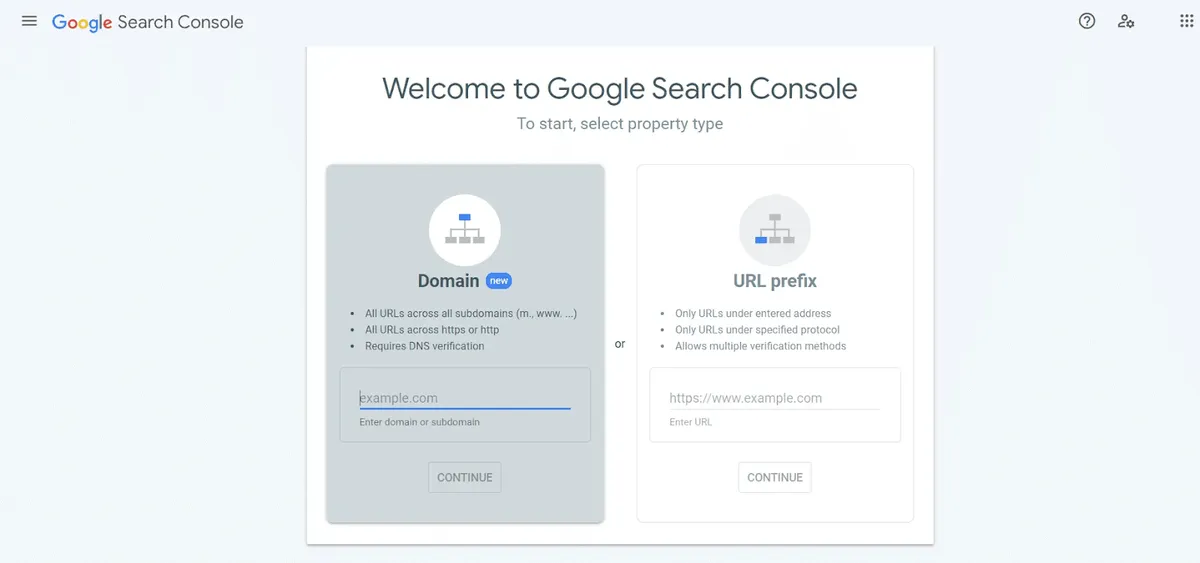
Property Setup: After verification, set up your website as a property in Google Search Console. This step enables the tool to start collecting and presenting data related to your website's performance in Google search.
By leveraging Google Search Console data you can make informed decisions and implement optimizations for improved search engine visibility.
For instance, you can start by reviewing performance reports in GSC to understand key metrics such as impressions, clicks, and average position in search results.

Moreover, you can also utilize Search Console to identify and address issues impacting your site's performance, such as crawl errors, mobile usability problems, or indexing challenges.
C. Integrating Third-Party SEO Tools
Integrating third-party SEO tools involves connecting external platforms, like SEMrush or Ahrefs, to your analytics setup for a more comprehensive view of your website's performance.
Steps to follow:
Create accounts on chosen third-party SEO tools.
Link third-party tools to Google Analytics or other analytics platforms.
Third-party integrations provide additional layers of insights, covering aspects such as competitor analysis, keyword research, and backlink monitoring beyond what traditional analytics tools offer.
How do you analyze and Interpret SEO data?
After the integration, it is important to analyze and interpret the SEO data obtained. It involves a systematic approach to making informed decisions and optimizing your website's performance. Here's a general process that you can follow:
A. Analyzing Google Analytics Reports
Reading Google Analytics reports is a critical step in interpreting how users interact with your website and assessing the effectiveness of your SEO strategies.
You can start by analyzing where your website traffic is coming from, whether it's organic search, direct, referral, or social. Understanding traffic sources helps in refining marketing efforts.
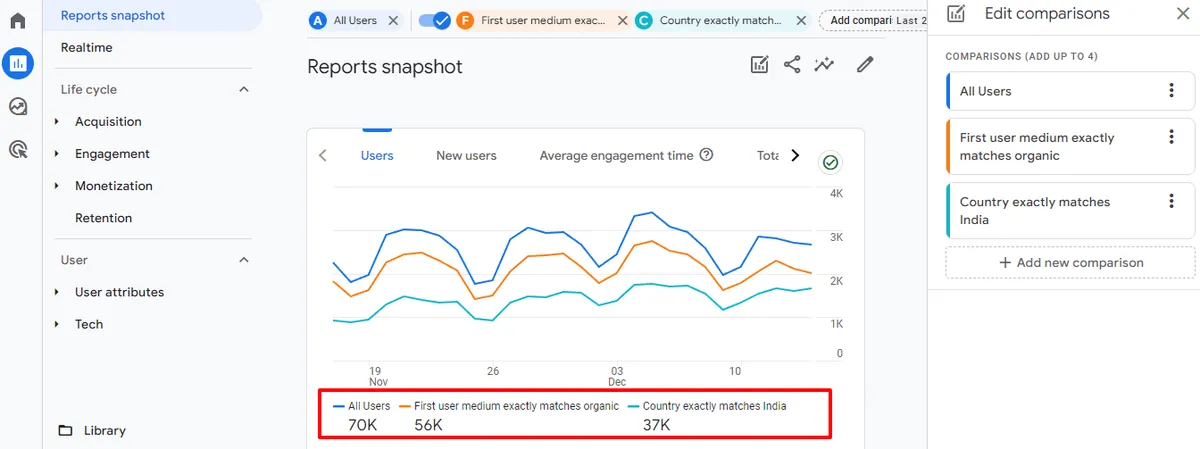
Similarly, explore metrics like pageviews, bounce rate, and time on page to understand how users engage with your content. This insight is vital for optimizing the user experience.
Moreover, if you have set up conversion tracking, analyze the conversion data to evaluate the performance of specific goals, such as form submissions or product purchases. This deeper level of analysis provides actionable insights into the effectiveness of your website in converting visitors into desired outcomes.
B. Understanding Google Search Console Data
Google Search Console data offers insights into how your website is perceived and indexed by Google. Within GSC, one key aspect to consider is the Search Queries. By reviewing the queries for which your website appears in search results, you can identify high-performing keywords and opportunities for improvement. This analysis helps you align your content with user search intent.
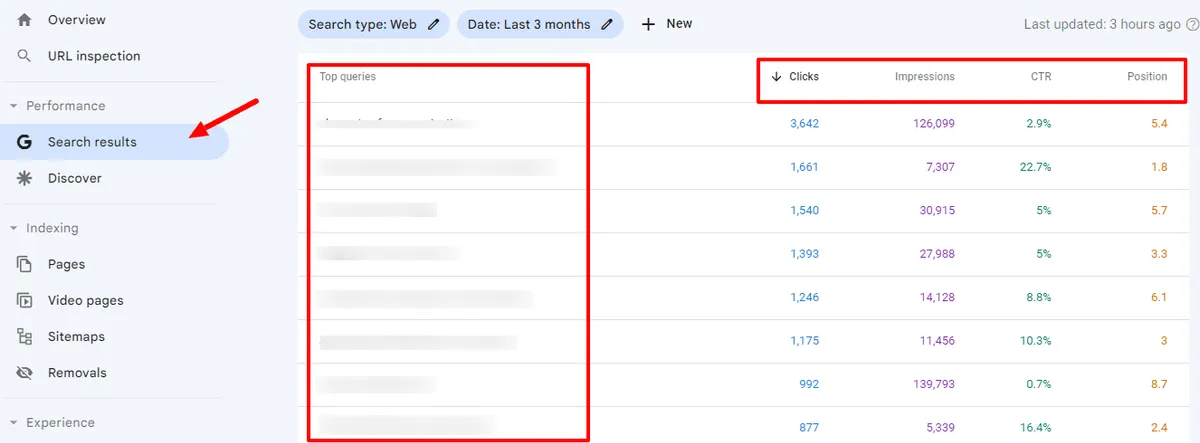
Another crucial metric is the Click-Through Rate (CTR). Analyzing CTR provides an understanding of the percentage of users who click on your website's link in search results. This metric serves as an indicator of the relevance of your content, guiding you in creating content that resonates with your audience.
Additionally, focusing on Indexing and Crawling is essential. Monitoring crawl errors, index status, and sitemap data ensures that search engines can access and index your content effectively.
Similarly, addressing crawl errors and optimizing your sitemap enhances the chances of search engines properly understanding and ranking your pages, contributing to a strong organic presence.
C. Interpreting Insights from Third-Party Tools
Interpreting insights from third-party SEO tools requires thoroughly analyzing the data provided by tools such as SEMrush, Ahrefs, or Moz.
One of the crucial aspects to start with is competitor analysis. By using these tools, you can assess the performance of competitors, identify their strategies, and uncover opportunities for improvement. This information is valuable for shaping your SEO strategies and staying competitive in your industry.
Another important consideration is backlink profiles. These tools allow you to analyze the quality and quantity of backlinks to your site and your competitors. Understanding the backlink profile provides insights for building a strong backlink strategy, which is essential for improving your website's authority and search engine rankings.
Additionally, third-party SEO tools play a key role in Keyword Research. Utilizing these tools enables in-depth keyword research, helping you identify new opportunities and optimize your content for high-performing keywords.
However, It is important to note that analyzing and interpreting SEO data is an ongoing process. Each element of this process plays a vital role in gaining a thorough understanding of your website's performance.
Understanding the crucial Aspects of SEO Analytics
Here are some main aspects of SEO analytics that you, as a website owner or marketer, should focus on:
Keyword Performance: Monitor how well specific keywords relevant to your business are ranking on search engines. Understand the impact of these keywords on your organic traffic.
Website Traffic Analysis: Examine your overall website traffic and identify the sources—whether it's organic search, direct visits, or referral traffic—to gain insights into the effectiveness of your online presence.
User Behavior: Analyze how visitors engage with your content. Keep an eye on metrics like bounce rate, time on page, and the conversion path to understand how users interact with your website.
Backlink Analysis: Evaluate the quantity and quality of backlinks to your site. Backlinks play a crucial role in search engine algorithms and can significantly impact your website's ranking.
Page Load Speed: Assess how quickly your web pages load. Page speed is a critical factor in both user experience and search engine rankings.
Conversion Tracking: Measure how effectively your website converts visitors into customers or achieves other predefined goals. This is essential for understanding the success of your online strategies.
ROI Measurement: Determine the return on investment from your SEO efforts by linking analytics data to business outcomes and goals.
What is the difference between SEO and analytics?
The main difference between SEO and Analytics is that SEO is a strategic practice designed to optimize a website's visibility on search engines and drive organic traffic. On the other hand, Analytics, specifically web analytics, includes the systematic collection and interpretation of data related to website performance. The following table highlights some significant differences in detail.
| Aspect | SEO (Search Engine Optimization) | Analytics |
|---|---|---|
| Focus | Primarily focused on improving online visibility, organic traffic, and search engine rankings. | Centers on analyzing data related to website traffic, user interactions, and the effectiveness of marketing efforts. |
| Goal | To enhance a website's position in search engine results, increase organic traffic, and attract a targeted audience. | To provide insights for making informed decisions, optimizing strategies, and measuring the impact of online activities. |
| Components | Involves on-page and off-page optimization, keyword research, content creation, and link-building. | Encompasses a wide range of metrics, including traffic sources, user behavior, conversions, and engagement metrics. |
| Execution | Requires the implementation of various SEO techniques and strategies, such as optimizing content, improving site structure, and acquiring quality backlinks. | Involves the setup and configuration of analytics tools (e.g., Google Analytics), creating custom reports, and interpreting data trends. |
| Primary Tools | Keyword research tools, on-page SEO plugins, link-building tools. | Google Analytics, Google Search Console, and third-party analytics tools. |
Conclusion
In conclusion, understanding SEO analytics is important for your business's online success. This guide has highlighted its crucial role in figuring out your website's performance and improving your strategies.
As you explore tools like Google Analytics and Search Console, you'll get valuable insights to make smart decisions. From setting up accounts to looking at metrics, this guide makes the process easy, helping you stay flexible in the changing state of search engine optimization.
Related blog posts
The Hidden Flaws in Search Volumes and How to Solve Them
Learn how AI Search Volume delivers reliable search volumes by combining GKP, GSC, and Trends so that you can prioritize the right keywords.
1 July 2025
AI Overviews Are Taking Over SERPs
From traffic drops to decreasing CTRs, AI Overviews are shaking up SEO. Learn what is happening and how AccuRanker helps you track AIO.
25 June 2025
How AccuRanker’s AI Models Fix Inaccurate SEO Data
Struggling with unreliable SEO data? Discover how AccuRanker’s CTR, Search Intent, Search Volume, and Share of Voice deliver accurate insights.
1 June 2025




